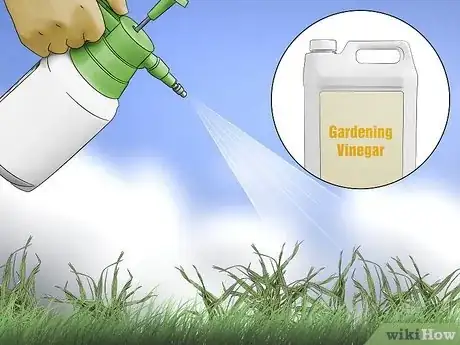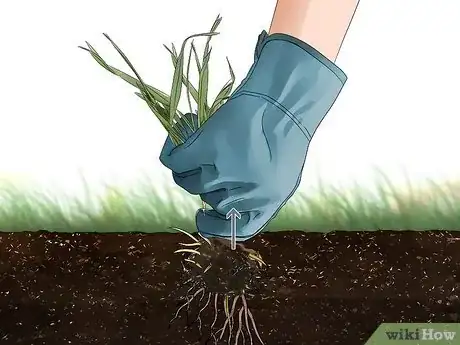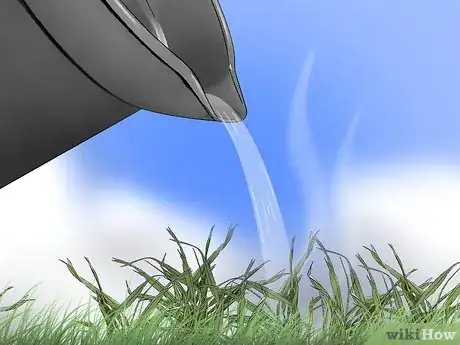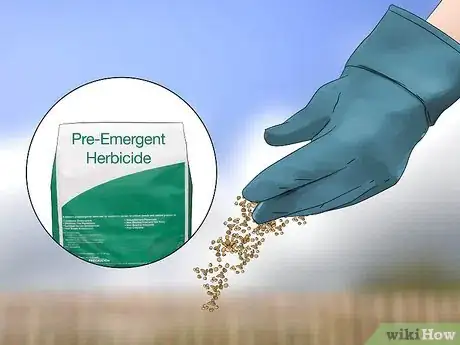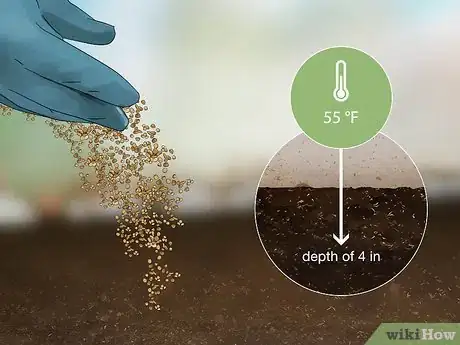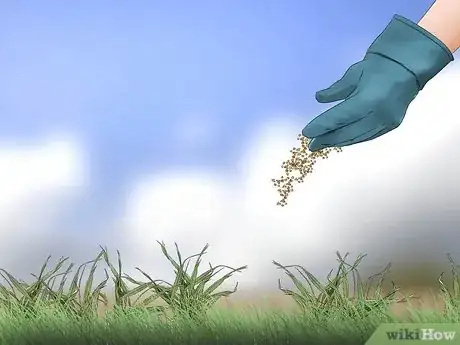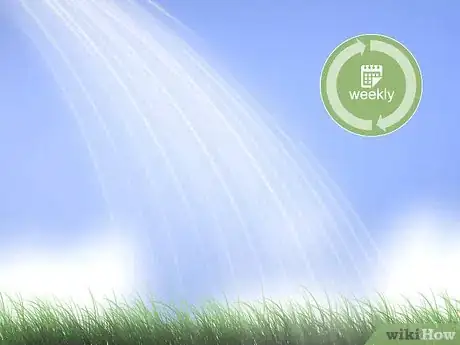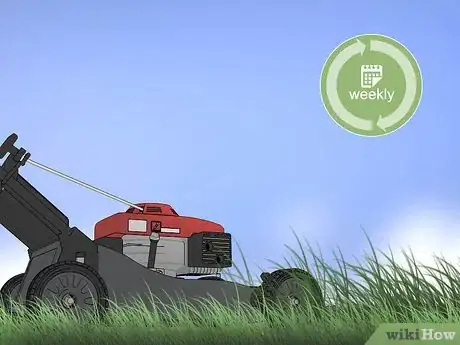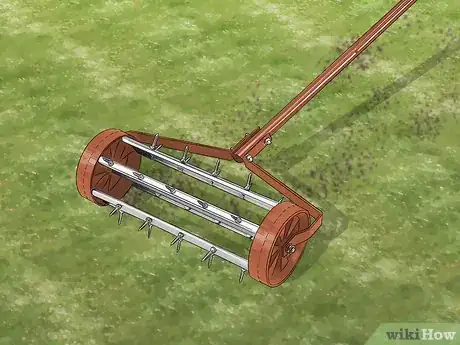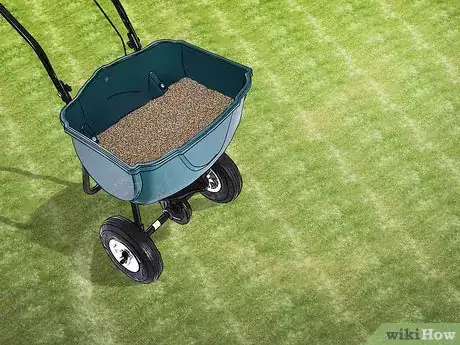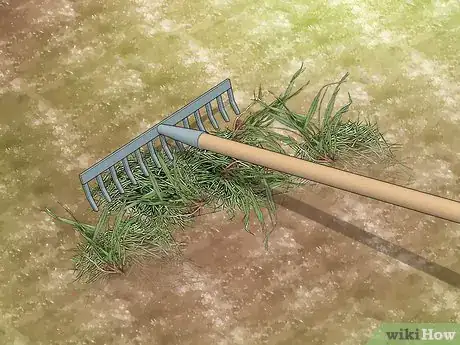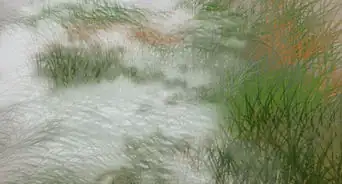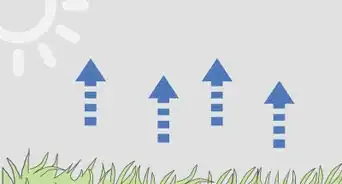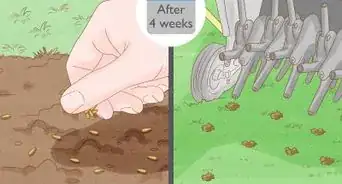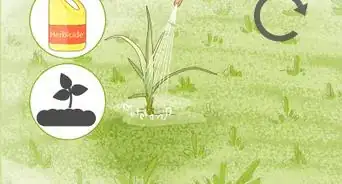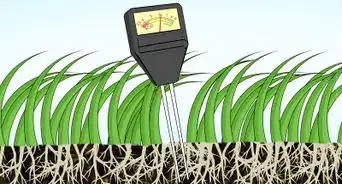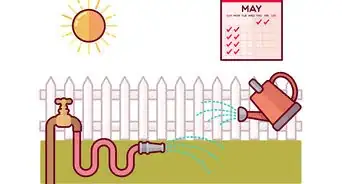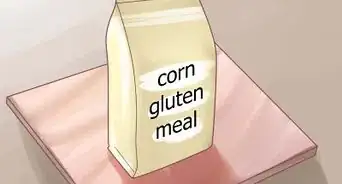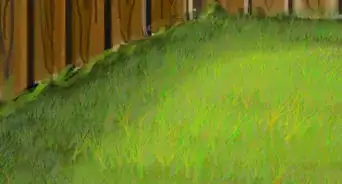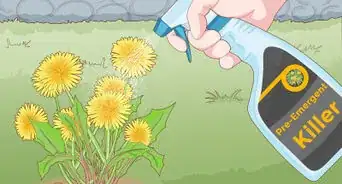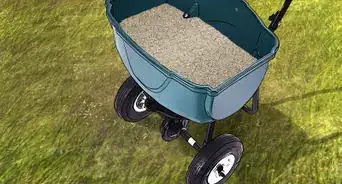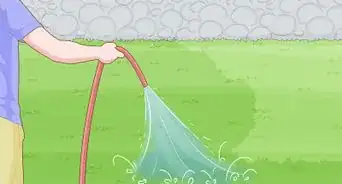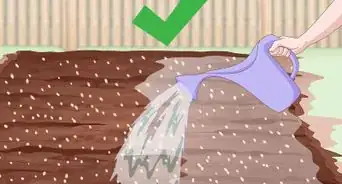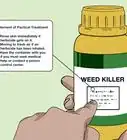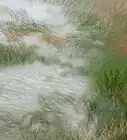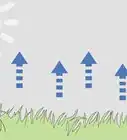This article was co-authored by Anthony "TC" Williams and by wikiHow staff writer, Eric McClure. Anthony "TC" Williams is a Professional Landscaper in Idaho. He is the President and Founder of Aqua Conservation Landscape & Irrigation, an Idaho Registered Landscape Business Entity. With over 21 years of landscaping experience, TC has worked on projects such as the Idaho Botanical Garden in Boise, Idaho. He is a Idaho Registered Contractor and a previously Licensed Irrigator in the State of Texas.
There are 13 references cited in this article, which can be found at the bottom of the page.
This article has been viewed 393,076 times.
Does crabgrass die in the winter? Can you get rid of crabgrass naturally? We’re here to answer these questions and more. While getting rid of crabgrass may seem difficult, it’s actually a lot easier than you might imagine. In this article, we’ll cover extermination, prevention, and proper lawn maintenance so that you can reclaim your garden from these industrious invaders.
Steps
Killing Crabgrass
-
1Spray crabgrass with gardening vinegar to kill it as it emerges. Gardening vinegar, which is stronger than household vinegar, will put crabgrass down in 24 hours. Fill a spray bottle and spritz the weed thoroughly with the vinegar. The next day, rip the crabgrass out and discard it in the garbage. This is the safest and most effective way to handle active patches of the weed.[1]
- You can buy gardening vinegar online or at any local gardening store.
-
2Pick the crabgrass when it’s still young to prevent seed-spreading. Crabgrass spreads quickly. If you let it grow for a whole season, or if you miss a particular area, you could find yourself with an infestation. Whenever you see a bit of crabgrass, simply pluck it out by hand from the root.[2]
- You can tell crabgrass hasn’t matured yet when it only has 2-4 stalks and the leaves aren’t overlapping one another.
- Don’t pick mature crabgrass to avoid spreading seeds. Mature crabgrass will drop dozens, if not hundreds of seeds when you lift it out of the ground.
- If plucking, water the area with the crabgrass thoroughly beforehand. This loosens up the soil and increases your chances of pulling out all the root systems when plucking. Alternatively, you can also use a pair of pliers to grab and gently pull up the crabgrass.
Advertisement -
3Try pouring boiling water over crabgrass to kill the crabgrass. Boil a pot of water on the stove and carefully carry it out to the crabgrass plant you want to destroy. Pour the scalding water on top of the plant. This may kill the crabgrass and damage the roots enough to prevent the weed from growing back.[3]
- For best results, remove the top portion of the plant first so that the water can penetrate the roots.
- You may need to do this multiple times to fully kill off a mature crabgrass plant with a deep root system.
Preventing Crabgrass from Sprouting
-
1Treat your lawn with pre-emergent herbicides to prevent crabgrass. Pre-emergent herbicides act by forming a chemical layer at the surface of the soil. As crabgrass seeds germinate, they absorb the herbicide, which prevents crabgrass seeds from sprouting in the first place.[4]
- Any pre-emergent herbicide that mentions crabgrass on the label and contains dithiopyr, prodiamine, or pendimethalin should work.[5] You can find a variety of high-quality options here.
- These herbicides come in a liquid and powder form. Follow the instructions on the label to apply the herbicide to your lawn.
-
2Apply any pre-emergent herbicides in the early spring. Wait for the soil temperatures stabilize at around 55 °F (13 °C) at a depth of 4 inches (10 cm). Buy a soil thermometer if you want some help when it comes to timing the application. So long as the crabgrass hasn’t already emerged, this should be an effective treatment.[6]
- Always apply the herbicide along with a starter fertilizer. Fertilizer helps thicken the turf, which helps to snuff out any crabgrass seeds that weren't killed by the fertilizer. Apply a starter fertilizer along with your herbicide and you're getting more bang for your buck.
-
3Apply post-emergent herbicides in the summer, if necessary. You only need to do this if you see some crabgrass growing once summer starts and you want to totally put an end to the problem right now. Post-emergent herbicides will kill grass seeds as well, so only go this route if you totally want to cleanse your lawn. Opt for a herbicide containing dithiopyr for best results.[7]
- You can either treat your entire lawn with post-emergent herbicide, or spot-treat individual crabgrass plants.
- If you do not want to harm your lawn, you’ll need to manage the crabgrass plants individually. Luckily, there are plenty of options!
Controlling Crabgrass with Lawn Maintenance
-
1Provide your lawn with roughly 1 in (2.5 cm) of water a week. Give your lawn a thorough watering about once a week. This will encourage the grass’s root system to develop deeper than the crabgrass’s roots, which will keep the problem from spreading.[8]
- If your grass’s root system extends deeper than the crabgrass’s roots, the crabgrass will seriously struggle to compete for nutrients and resources. It should starve out over time, and it will struggle to produce seeds.
-
2Mow your lawn less often and let your grass grow in the spring. Frequently mowing your lawn actually gives the crabgrass a ton of sunlight, which isn’t ideal (it’s a sun-hungry weed). Allow your grass to grow longer than 3–4 inches (7.6–10.2 cm) in the spring. This will starve the sprouting crabgrass and make it easier to manage, or help control it entirely![9]
- If there are areas where the crabgrass is laying down, use a rake to pull it up before mowing.
-
3Aerate your soil in the spring to loosen compaction. If your soil is suffering from compaction, it may be difficult for your grass to get enough air and water. If that stunts the root system’s growth, crabgrass and other forms of weeds thrive. Run an aerator over your lawn every season if your grass keeps struggling to survive, especially if your soil contains high levels of clay.[10]
-
4Overseed in the spring to beat crabgrass to the punch. If you’re spending most of this growing season fighting off crabgrass, wait for it to die in the winter. The next spring, overseed your lawn to promote the right sort of growth. While you only have to overseed patches where crabgrass thrive, it might be helpful to overseed your entire lawn every 2 or 3 seasons.[11]
- Your soil has a limited number of nutrients to give. By overseeding, you increase the amount of grass, which should outcompete the crabgrass since it takes much longer to grow.
-
5Clear out all dead crabgrass in the winter by throwing it out. Dead crabgrass can have an allelopathic effect, meaning it releases a toxin that stops other nearby plant growth. Completely remove any dead crabgrass plants from your lawn by hand and dispose of them well away from your turf once they die out on their own in the winter.[12]
- If you’ve removed crabgrass for a season and then it came back, you may be wondering, “Is crabgrass perennial or annual?” It’s an annual, but it drops seeds when it dies. This is why clearing dead crabgrass out is essential.
Community Q&A
-
QuestionCan I put Roundup on the crabgrass to get rid of it?
 wikiHow Staff EditorThis answer was written by one of our trained team of researchers who validated it for accuracy and comprehensiveness.
wikiHow Staff EditorThis answer was written by one of our trained team of researchers who validated it for accuracy and comprehensiveness.
Staff Answer wikiHow Staff EditorStaff AnswerYes, Roundup should kill any crabgrass plants you're dealing with. Just be sure that you remove the plants once they've died so that you don't accidentally spread the plant's seeds.
wikiHow Staff EditorStaff AnswerYes, Roundup should kill any crabgrass plants you're dealing with. Just be sure that you remove the plants once they've died so that you don't accidentally spread the plant's seeds. -
QuestionIf I put a pre-emergent down in the spring and then I put a thin layer of screened top soil over that area, can I plant grass seed there? Will the grass seeds germinate or will they not sprout because of the pre-emergent?
 wikiHow Staff EditorThis answer was written by one of our trained team of researchers who validated it for accuracy and comprehensiveness.
wikiHow Staff EditorThis answer was written by one of our trained team of researchers who validated it for accuracy and comprehensiveness.
Staff Answer wikiHow Staff EditorStaff AnswerPre-emergent herbicides are non-selective, so any mature grass will be perfectly safe. Unfortunately, the grass seeds aren't going to sprout. This is why it's generally recommended that you either re-seed or apply herbicide, but never both.
wikiHow Staff EditorStaff AnswerPre-emergent herbicides are non-selective, so any mature grass will be perfectly safe. Unfortunately, the grass seeds aren't going to sprout. This is why it's generally recommended that you either re-seed or apply herbicide, but never both. -
QuestionCan you burn-out crabgrass in the winter when it is dry and brown?
 Community AnswerYou can burn out crabgrass if your local fire station does not have a fire warning in effect.
Community AnswerYou can burn out crabgrass if your local fire station does not have a fire warning in effect.
References
- ↑ https://extension.umd.edu/resource/vinegar-alternative-glyphosate
- ↑ https://www.goodhousekeeping.com/home/gardening/a20706821/how-to-get-rid-of-crabgrass/
- ↑ https://peppershomeandgarden.com/does-boiling-water-kill-weeds/
- ↑ https://planttalk.colostate.edu/topics/weeds-cultural-problems/2118-herbicides-pre-emergent/
- ↑ https://turf.purdue.edu/wp-content/uploads/2012/06/15_AGRY_Patton_sequential20apps.pdf
- ↑ https://extension.umn.edu/planting-and-growing-guides/lawn-care-calendar
- ↑ https://turf.purdue.edu/wp-content/uploads/2012/06/15_AGRY_Patton_sequential20apps.pdf
- ↑ https://www.thisoldhouse.com/yards/21015343/say-good-bye-to-weeds
- ↑ https://www.canr.msu.edu/news/mow_high_for_weed_and_grub_control
- ↑ https://ipm.missouri.edu/MEG/2012/3/Spring-Lawn-Care-Aeration-Fertility-and-Crabgrass-Control/
- ↑ https://www.pennlive.com/gardening/2008/09/crabgrass_and_overseeding.html
- ↑ https://www.acs.org/content/acs/en/pressroom/presspacs/2013/acs-presspac-june-26-2013/crabgrass-secret-the-despised-weed-makes-herbicide-to-kill-neighboring-plants.html
- ↑ https://www.bobvila.com/slideshow/12-natural-ways-to-kill-weeds-45747
- ↑ http://ipm.ucanr.edu/PMG/PESTNOTES/pn7456.html
About This Article
To get rid of crabgrass, pick it out by hand while it’s still young and make sure to get out the roots so that it doesn’t spread. Then, to prevent it from coming back, pile mulch over the area to create a barrier that new plants can’t get through. For larger patches of crabgrass, spray the area with a postemergence herbicide to kill the plant and keep it from dropping any more seeds. Allow the herbicide 2 weeks to work, then spray the area again if any crabgrass is left. For tips from our Landscaping reviewer on how to maintain your lawn to prevent crabgrass , read on!
